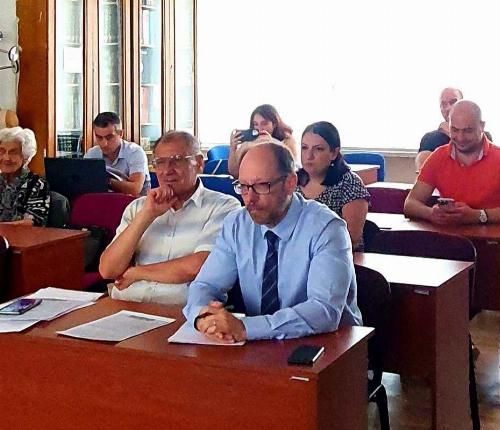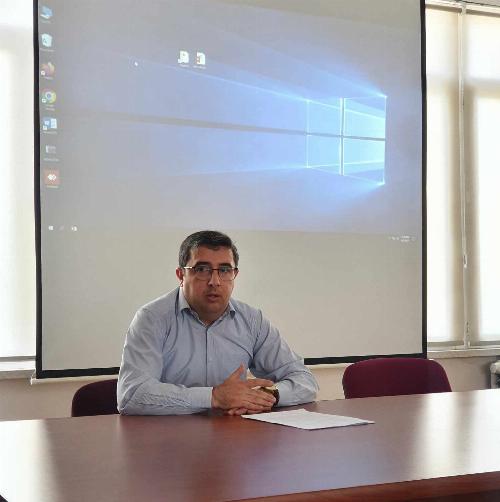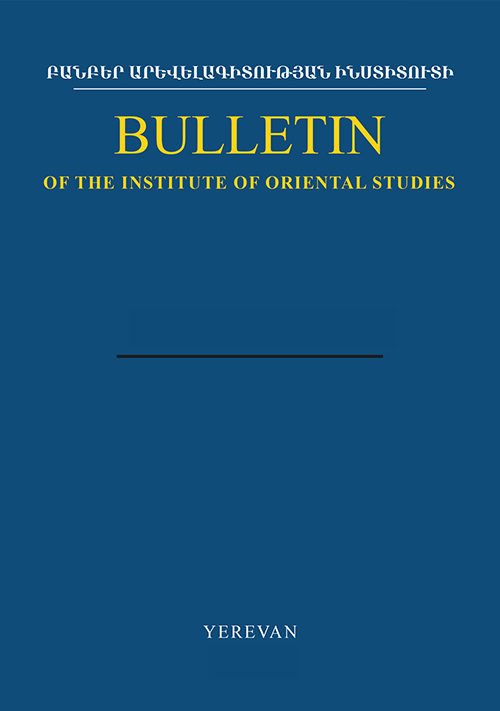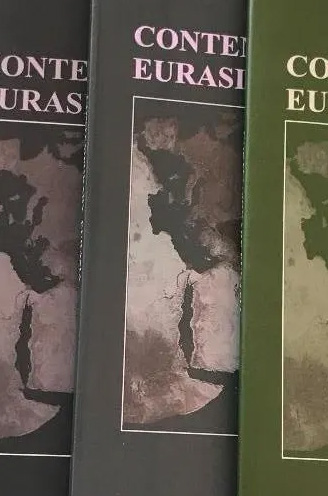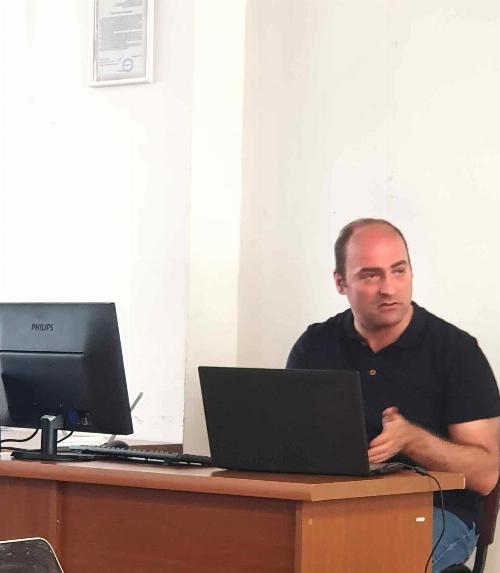
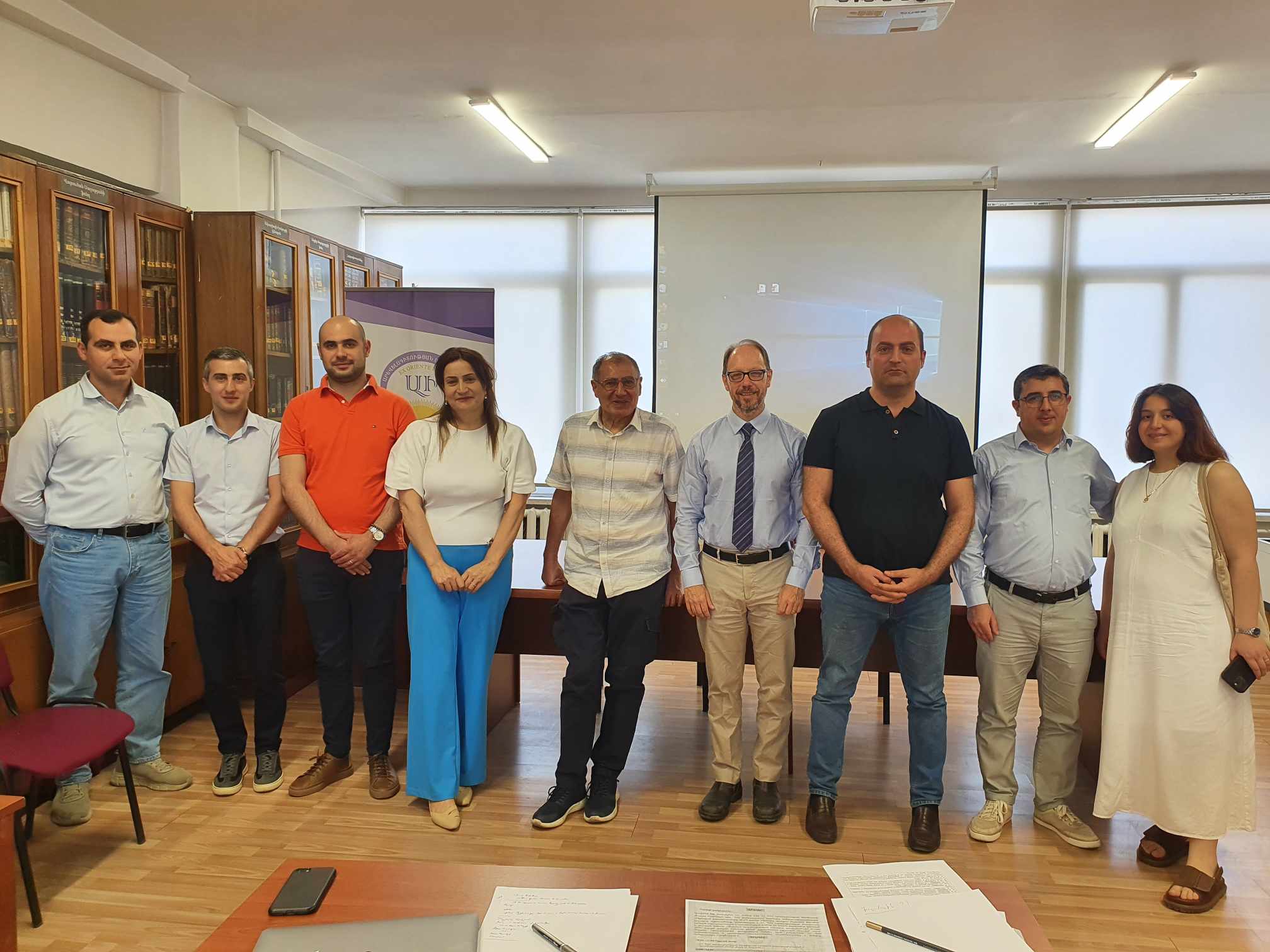
On June 2nd, a seminar-workshop was held with the title of "Transformations of Identity in the Near East in the 9th-14th Centuries (Armenian Phenomenon)" at the Institute of Oriental Studies of the NAS RA. The event was organized by the Department of Eastern Source Studies and Historiography of the Institute under the scientific leadership of Azat Bozoyan.
The workshop prominently featured the participation of Professor Sergio La Porta, not only for a scientific experience exchange but also to promote international cooperation and strengthen the project's scientific and organizational potential. He arrived from Fresno State University as a foreign consultant involved in the project. La Porta, a recognized specialist in Armenian philology and medieval history, addressed the complex and sometimes contradictory manifestations of identities around the images of missionaries and martyrs in medieval Armenian historiographical and hagiographic sources in his report, "The Missionary and the Martyr: Contested Identities in Medieval Armenia". The report especially emphasized how these images contributed to the process of constructing Armenian spiritual identity and historical memory.
Azat Bozoyan (Institute of Oriental Studies) in his report "Addressing Identity Issues in Literary Monuments" demonstrated how medieval Armenian historians addressed national and religious identity issues in their works, presenting their evolution through different historical periods.
Shavarsh Azatyan (Institute of History) in the report "Urban Life in Armenia during the Mongol Domination" thoroughly examined the social structural changes and transformations of urban population identity based on Armenian testimonies.
In the second session, Gagik Danielyan (Matenadaran) raised an interesting question in his report "Sultan Badr al-Din Lulu of Mosul: An Islamized Armenian or a Disguised Christian?" exploring the complex ethnic and religious affiliation of this historical figure and showing how individuals in the medieval Near East could have multilayered identities.
Tigran Sirunyan (Matenadaran) in the report "Linguistic Influences: Latinisms in Unitor Works" demonstrated how Armenian Unitor authors used Latin terminology in their literary works and its impact on the development of the Armenian literary language.
Gabriel Nahapetyan (Institute of Oriental Studies) in his report "Preconditions for Forming a Unique Identity in Paulician Communities" deeply addressed the religious and social nature of the Paulician movement. He analyzed the main prerequisites that contributed to the formation of a unique identity model in these communities, based on the interaction of confessional characteristics, social isolation, and political developments. The process of identity formation was viewed as a historical continuity that reached the 20th century, allowing the revelation of several historical manifestations of identity reconstruction.
The workshop, implemented within the framework of the RA MESCS "Scientific Performance Promotion Grant Program 2025" competition, concluded with productive discussions where participants compared their research results and outlined directions for further studies.


